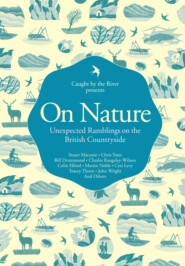По всем вопросам обращайтесь на: info@litportal.ru
(©) 2003-2025.
✖
How Can I Stop Climate Change: What is it and how to help
Настройки чтения
Размер шрифта
Высота строк
Поля
uncertainty and the sceptics
The complexity of the Earth’s climate means that there has been some scientific uncertainty about global warming. Although the theory of the greenhouse effect was first put forward more than 100 years ago, clear evidence that it was happening was not readily available until the 1970s.
Today there is little room for doubt that climate change is happening and that it is caused by human activity. The IPCC – a naturally cautious body – stated in 2007, ‘Most of the observed increase in global average temperatures since the mid-20th century is very likely (>90 per cent) due to the observed increase in anthropogenic greenhouse gas concentrations.’
But earlier scientific uncertainty has proved a fruitful area for media debate, amplifying the doubts of people who have questioned climate change. Some have exploited scientific doubt to spread complacency and confusion because they have seen addressing climate change as a threat to their interests. Certain companies, for example, have tried to divert attention from the environmental impact of fossil fuels.
“Some will always make a case for doubt in an issue such as this,partly because its implications are so frightening. But what is not indoubt is that the scientific evidence of global warming caused bygreenhouse gas emissions is now overwhelming.
Tony Blair, UK Prime Minister (1997-2007)
Scientists have explored alternative theories on the rising temperatures – for example, that they are down to variation in the sun’s cycles. But this does not explain the fit between rising levels of greenhouse gases and rising temperatures. In fact, computer models looking at the effect of the sun’s output on our current climate show that if natural variations were the cause, the Earth should now be cooling, not getting hotter.
The sun’s activity has in fact been decreasing since 1985. Natural phenomena simply do not explain why temperatures have risen in the past 30 years.
An assessment of more than 900 scientific studies on climate change, published over a ten-year period, found that none of the research disputed the consensus view that human activity is responsible for global warming.
fuelling the scepticism
While some scientists have pursued legitimate lines of enquiry over the science of climate change, others have deliberately exploited doubts for commercial and political gain. In the United States PR strategists advised the oil industry on how to set up groups to stir up doubts over the science and influence public opinion – in much the same way as the tobacco industry had earlier tried to persuade the public that smoking did not damage their health.
Oil has been key to the global economy for a century, and action to tackle emissions from fossil fuels has been seen to threaten the industry. So it is perhaps not surprising that politicians and many others were at first persuaded not to take global warming seriously.
the scientific consensus
The Intergovernmental Panel on Climate Change (IPCC) is an international body set up by the United Nations and the World Meteorological Organisation (WMO) to assess scientific information on climate change. It brings together climate scientists and government experts to consider research from around the world. In 2007 it shared the Nobel Peace Prize with Al Gore, the maker of An Inconvenient Truth.
four climatehotspots
Scientists have identified a number of hotspots around the world that could trigger fundamental changes in the global climate, including:
Amazon rainforest: Changes in the Sahara could reduce the fertility of the Amazon region, speeding up destruction of the rainforest.
North Atlantic ocean current: Melt-water from Arctic ice sheets could slow the North Atlantic ocean current, leading to cooling in northern Europe.
Asian monsoon: Changes to weather systems in the Atlantic could have a serious effect on the reliability of Asia’s annual rainfall.
Sahara desert: Dust from the Sahara fertilises the Amazon, but if the region gets wetter, there will be less soil erosion and more chance of plants returning to the Sahara.
Scientists are working to understand how such hotspots could affect the climate – and what impact climate change will have on the hotspots themselves.
The IPCC’s fourth report, issued in 2007, highlighted the growing evidence of observed climate change from around the world and looked at future predictions.
Its evidence is based on a consensus among the scientists involved. It is mainstream thinking – endorsed by international governments – and as such it can err on the side of caution. Some have suggested that the IPCC is in fact presenting a ‘bestcase scenario’, underplaying the evidence for more violent climate change. One author based at the Met Office Hadley Centre Richard Betts says that means that the result is ‘bullet proof’ in terms of the certainty of the science it contains. ‘When I read this [the IPCC report] for the first time I did feel fear – I had worked on it for three years and I knew it was right,’ he says.
what will the world be like with a changed climate?
Scientists can predict with increasing accuracy how the climate will respond to rising levels of pollution in the atmosphere. In 2007 the IPCC highlighted the scientific predictions about the impacts of climate change over the next 50 to 100 years, revealing a world in which billions of people will be at risk. Sub-Saharan Africa, large river delta areas in parts of Asia, small island states and the Arctic regions are likely to be particularly vulnerable.
“ It’s the poorest of the poor in the world, and this includes poor people even in prosperous societies, who are going to be the worst hit and who are the most vulnerable as far as the impacts of climate change are concerned.
Rajendra Pachauri, Chair of the IPCC
the Hadley Centre’s globalclimate models
The UK’s Met Office Hadley Centre is spearheading international research. Early climate models were simplistic replicas of the climate, covering temperature, rain and carbon dioxide, and were more useful for monitoring changes in the weather than for predicting future climate. Today’s models include a vast number of variables and have been shown to be capable of describing historical changes in the climate with reasonable accuracy. Interactive cloud systems, oceans, land-surface cover and aerosol pollution are all factored into the predictions made by models such as the Hadley Centre’s latest (global climate model) HadGEM1. This looks at 38 different layers of the atmosphere – allowing for greater accuracy in the predictions, and more regional detail than in older models.
Africa: Many countries are already becoming drier and this is predicted to get worse. Some 75-250 million people likely to face water shortages by 2020. Farm yields in some parts will be reduced by half by 2020. Greater risk of flooding near the Equator. Sea-level rise will affect some coastal areas by the end of the century. A quarter of Africa’s population lives in coastal areas.
Continental temperature trends
Asia: More than 1 billion people facing reduced supplies of fresh water in large river basins by mid-century. Deltas in China, India and Bangladesh at risk from rising seas. Salt water likely to contaminate the ground water. Floods may bring diseases like diarrhoea and cholera. Warming oceans will affect fish and fishing communities.
Europe: More flash floods and greater coastal erosion. In Southern Europe heat and less rainfall will be bad news for farming. Human health at risk from heat waves and smoke from wildfires. Drier summers in Central and Eastern Europe will put water supplies under stress. Forests and peat areas at risk from wildfires. In Northern Europe growing seasons likely to increase, and forest likely to flourish. Less need to heat homes but risk of more winter floods.
South America: Tropical rainforest in Eastern Amazonia likely to be dry grassland by mid-century. Species such as black spider monkeys, bearded sakis, red-handed tamarins, jaguar and pumas, will come under severe threat and some truly magnificent and significant species are likely to be lost for ever. Drier, and in some areas, saltier conditions could reduce food yields. Warmer conditions could boost soybean production in temperate areas. Vanishing glaciers will threaten water supplies in cities such as Lima, Peru, as well as hydroelectric power and farming.
North America: Farmers in northern regions could have longer growing seasons for a few decades. California may dry out and become more vulnerable to winter floods. Hotter weather and wildfires will pose health hazards. Parts of the eastern coast will see more intense hurricanes and tropical storms, storm surges and flooding.
Australia and New Zealand: Australia sees increasing water shortages by 2030 and significant loss of animal and plant varieties by 2020, particularly from the Great Barrier Reef and the Queensland Wet Tropics. Water shortages predicted for New Zealand’s North Island and rising temperatures will benefit farm yields for a time on the South Island. Risk of coastal flooding from mid-century in Australia and New Zealand.
UK climate change in the 21st century
Projected temperature increases, based on one of two IPCC scenarios – Low Emissions (+2.0°C, 525 ppm CO2 in 2080s) or High Emissions (+3.9°C, 810 ppm CO2 in 2080s)
climate change in the UK
With UK temperatures expected to increase by 2-3.5 °C by the 2080s, hot summers will be more frequent and very cold winters rare. Winter flooding is predicted to become more common, while farmers face shifts in growing seasons.
Sea levels will go on rising by 26-86 cm in the South East by 2080. Extreme high-water levels are likely to become more frequent, particularly on the east coast of England, and houses on floodplains are especially vulnerable. The Thames Barrier is likely to need replacing by 2030 if today’s levels of protection are to be maintained. Flooding is likely to hit the least well-off most: the most deprived 10 per cent of the population are eight times more likely to be living in the coastal floodplain than the wealthiest 10 per cent.
A study of UK wildlife found that eight species are under threat from climate change because of changes to habitat. Increased drought could mean fewer slugs and snails available as food for song thrushes in the south of England, with the population at risk across England, Wales and Ireland if warming continues. Skylarks, black grouse, common scoter and capercaillie are also likely to see their preferred habitat disappear. Stag beetles, currently only found in southern England, could find more suitable habitat further north. A warmer South East will attract new species: mosquitoes are already on the up and there are fears that malaria carriers could soon be in the UK. Some species will find they cannot adapt: the Snowdon lily could die out while the snow bunting is unlikely to be found in the UK.
the human cost
The human costs of inaction on climate change are incalculable. Millions of the world’s poorest people will experience dramatic changes in their way of life.
Regions close to the Equator – many of which rely on small-scale farming for food – will see bad harvests from a temperature rise of just 1-2°C. Farmers may be able to adapt by using different crop varieties and relying more on irrigation. But studies suggest that temperature increases above 3°C will be hard to accommodate. Heat will be bad news for dairy farmers: cows are less fertile, produce less milk and do not live as long in hot conditions. Cattle and pigs are also affected by heat – they tend to breed less.
Adapting to climate change will be difficult for small and family farms, for pastoralists and people who make a subsistence living on poor land, especially in parts of Africa and Asia. Without adaptation, crop yields are likely to fall and be badly affected by extreme weather events. Wealthy areas rich in resources are likely to adapt more easily.
Fishing communities will struggle as fish species migrate or die out. River fish will be affected as rainfall and snow melt patterns change. Millions of people, particularly in some of the poorest communities, rely on fishing to supplement their families’ diet.
Food will not be the only area of the economy that is damaged. The timber industry will see extreme weather and more wildfires, insects and pests.
Thousands – if not millions – of people have already left their homes because of the changing climate. The International Red Cross says 25 million people could already be classified as ‘environmental refugees’ in 2001 and it has been estimated that climate change could push the total number of displaced people worldwide to 1 billion by 2050. One study estimated that around 15 million were likely to be displaced from Bangladesh alone. In China 4,000 villages are likely to be abandoned as a result of the spread of the Gobi desert. Huge numbers of people on the move are thought likely to increase the risk of conflict in some areas where resources are most scarce.
health risks











